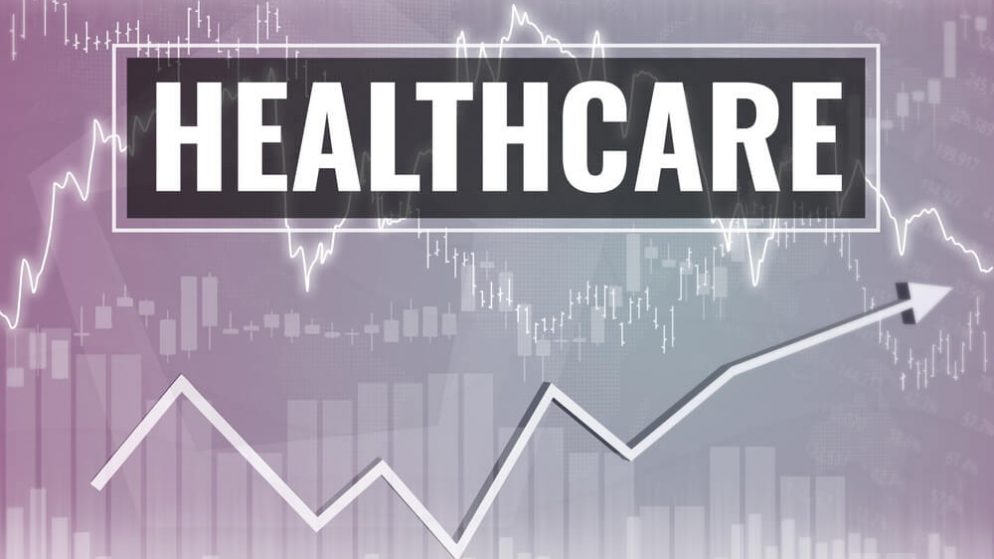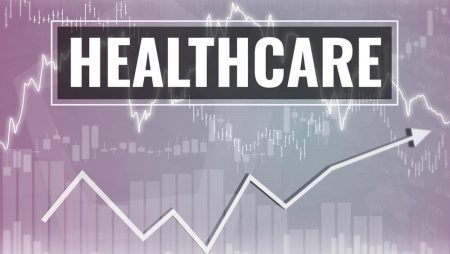



Get new exclusive access to healthcare business reports & breaking news




In case you are currently investing into healthcare or you plan to do so in the near future, some stocks with triple-digit revenue growth really sound like a golden ticket, don’t they? Here are, according to three fool.com contributors, three healthcare companies that are worth looking into as possible investment options.
Outset Medical doubled its sales last year, Shockwave Medical’s sales grew by a whooping 270% in its most recent quarter, while Aurinia Pharmaceuticals might triple its revenue in 2022, according to analysts.
Patrick Bafuma analyzed Outset Medical, mainly its sustainability, which could be questionable for any company’s triple-digit revenue growth. But Outset Medical has strong winds in its sails, and these come from the company’s dialysis innovator, Tablo, which should keep the sales coming for years to come. After posting a 105.5% year-over-year increase in fiscal-year 2021 revenue to the tune of $102.6 million, the company aims to keep expanding with its innovative dialysis system.
The main strong point of this healthcare company is being active on two addressable markets: in-hospital dialysis – worth $2.5 billion and at-home dialysis – carrying a $8.9 billion price tag, with solid reasons to believe Outset should gain significant ground in both, over the next few years. There are arguments behind this belief: the company has already signed agreements to deliver Tablo to seven of the eight largest health systems and a third of the 100 largest regional health systems. And since its innovative dialysis system already proved a 55% cost savings for one hospital system along with more than 95% treatment success rates, Outset Medical would most probably continue to increase Tablo’s in-hospital presence.
When it comes to the larger home dialysis market, the easy to use Tablo could help convince more patients to try home dialysis, which gives the company a lot of room to grow, since only 2% of dialysis patients are on home therapy now, while the worth of the addressable market is $8.9 billion. Compared to traditional home systems, Tablo users need less training, fewer weekly treatments, and shorter time setting up for treatment.
It’s no wonder the Centers for Medicare and Medicaid Services (CMS) named the Outset Medical system a substantial clinical improvement over current home hemodialysis devices.
If the “What’s covered” app the Centers for Medicare & Medicaid Services (CMS) launched in 2019, giving consumers direct access, on a mobile device, to some of the most-used content on Medicare.go would be used to explain the benefits of home dialysis and how insurance works to cover the costs, Tablo might gain even more ground. Not to mention CMS is giving a small financial incentive for healthcare providers to start patients on home treatments.
The company is just getting started, hoping to have 100 units in homes by the end of 2022, yet there were just over 59,000 home-dialysis patients in 2019. So, Outset Medical has more than enough room to grow, cost savings for hospitals, financial nudges from Uncle Sam, and a better patient experience, this all adds up to continued heady growth for years to come.
George Budwell looks into Aurinia Pharmaceuticals, which has not had a smooth 2022 so far. The autoimmune disease specialist’s shares have lost a staggering 55% of their value so far this year, and are currently trading at a whopping 99% discount relative to their all-time highs.
But if you are a longtime investor in healthcare, you probably already know that, when it comes to healthcare marketing, trust should be the main pillar for success, and it is not an easy trait to build in the healthcare industry.
But Aurinia has a golden egg in its basket, and that is the company’s oral lupus nephritis (LN) medication Lupkynis (voclosporin), which is on track to post fairly significant sales figures for this year with growing prospects beyond 2022.
Aurinia’s management expects the drug to make in between $115 million and $135 million in 2022. On the low side of this revenue forecast, the biotech’s sales ought to rise by at least 155% over last year’s haul. Longer term, Wall Street expects Lupkynis to hit an eye-popping $2 billion in annual sales by the end of the decade. That’s an enormous revenue projection for a company with a current enterprise value of approximately $1 billion.
Aurinia’s stock went in the wrong direction because, after Lupkynis being approved in 2021, the company was widely expected to be a red-hot takeover target, which did not happen until now, and the new drug’s first-year sales did not go as well as predicted since the pandemic brought some unforeseen logistical issues. Since initial sales were more than a little underwhelming, some growth investors abandoned ship.
But Aurinia’s stock ought to eventually rebound, since Lupkynis addresses an unmet need in a sizable marketplace. Investors should be patient, however and not expect a quick turnaround. Like most early commercial-stage biotechs, Aurinia is fighting against a wave of negative sentiment right now. Therefore, this stock is best suited to investors who don’t mind buying some stock and holding it for the long term.
Taylor Carmichael shares his insight about Shockwave Medical, which is massively growing right now. Its minimally invasive platform for treatment of calcified plaques in arteries, via intravascular lithotripsy (IVL) is really innovative. Basically, Shockwave’s device uses sonic pressure waves to destroy calcium deposits without harming the soft tissue.
Shockwave’s platform is expected to become the standard treatment for calcified arteries, and investors are counting on a lot of recurring revenue. The company is now still placing its devices in hospitals around the world. Shockwave had $237 million in sales last year, up 250% from 2020. Revenue spiked even higher in the fourth quarter, up 271% from a year ago.
And if Aurinia suffered because of pandemic disruption, Shockwave’s results are remarkable, given the conditions. For 2022, the company is projecting revenue growth from 71% to 79%, which seems conservative, especially since Medicare doubled the payout to hospitals using the Shockwave’s device in 2022. This is a validation of the company’s platform and ultimately a financial boon for Shockwave as more and more hospitals will opt for IVL to treat calcified deposits in arteries.
Although the stock has gotten cheaper over the last year, the price-to-sales ratio having dropped from 76 in June to 22 now, the market is still pricing it for fantastic future growth. With a $5 billion market cap, Shockwave has plenty of room to keep on administering positive shocks to the stock market.